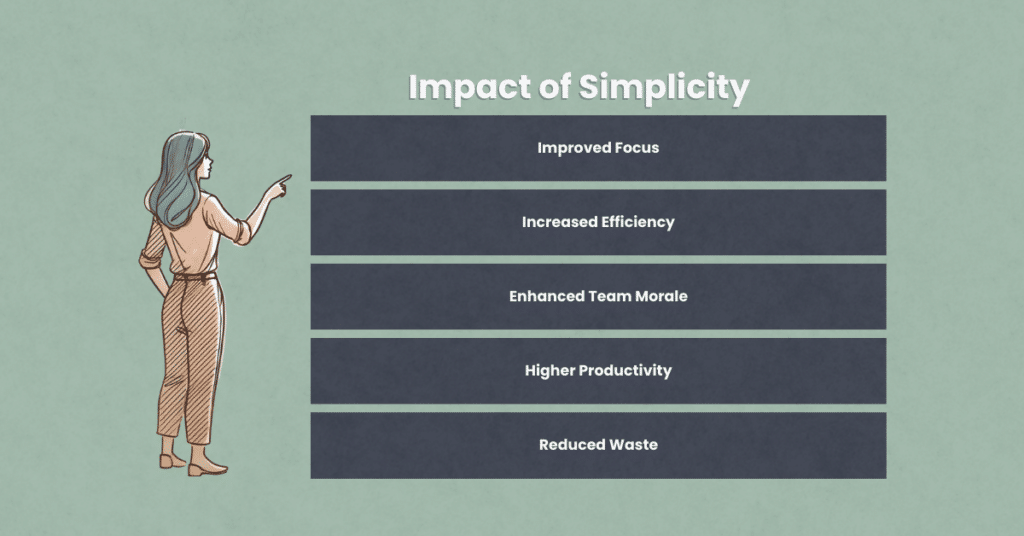As we progress through our series on the Principles of the Agile Manifesto, we now turn our attention to “Simplicity—the art of maximizing the amount of work not done—is essential.” This principle serves as a fundamental aspect of Agile practice, highlighting the importance of focusing on crucial tasks and discarding unnecessary efforts.
Understanding the Principle
At first glance, the idea of maximizing the amount of work not done might seem paradoxical. However, it is rooted in the Lean principle of reducing waste. By focusing on essential tasks and avoiding unneeded activities, teams can deliver more value to customers efficiently. This approach aligns closely with the Agile Manifesto, which values individuals and interactions, working outcomes, customer collaboration, and responding to change over comprehensive processes and documentation.
The Role of Simplicity in Agile
Simplicity in Agile means prioritizing tasks that contribute directly to project goals and eliminating or postponing those that don’t contribute directly to project goals. This approach ensures that teams concentrate their efforts on delivering features that provide the highest value to customers. The goal is not to avoid work but to avoid unnecessary work, thus making the process more efficient and productive.
Practical Applications
- Minimal Viable Product (MVP): By focusing on developing an MVP, teams can release a product or service with core functionalities quickly, gather user feedback, and make iterative improvements. This strategy avoids the pitfall of over-engineering and ensures that resources are used effectively.
- Task Prioritization: Prioritize tasks based on their value to the customer or project goals. This helps in focusing on high-priority items first, ensuring that the most valuable features are delivered early.
- Automation: Automating repetitive tasks frees up time for more critical activities. Automation enhances efficiency and allows teams to focus on innovative and complex tasks that require human intervention.
- Avoiding Gold Plating: Resist the temptation to add unnecessary features or tasks. Stick to what the customer needs and avoid activities that do not add significant value.
- Every Product has Risk Potential: Recognize that every product and project carries inherent risks, and actively manage these risks through regular assessment and mitigation strategies.
Achieving Simplicity in Practice
- Break Down Meetings: Short, focused meetings are more productive than long, exhaustive ones. Frequent and concise planning sessions help keep the team aligned and focused.
- Collaboration and Communication: Effective communication reduces the need for extensive documentation and helps teams understand requirements better. Regular face-to-face conversations are crucial.
- Feedback Loops: Implement continuous feedback loops to adapt to changes quickly. Early and frequent feedback helps in refining the product or service and ensuring it meets user needs.
- Efficient Practices: Techniques like continuous improvement ensure that only necessary tasks are undertaken, maintaining simplicity and avoiding unnecessary complexity.

The Impact of Simplicity
Embracing simplicity in Agile improves efficiency, focus, team morale, and productivity. By focusing on essential tasks and eliminating unnecessary ones, teams can deliver high-quality products and services that meet customer needs. This approach fosters continuous improvement and builds sustainable practices.
Simplicity reduces waste and streamlines workflows, allowing quicker delivery of value and shorter time-to-market. It boosts job satisfaction and morale, as team members engage in meaningful work and see the direct impact of their efforts. Higher productivity results from focusing on high-priority tasks without burnout, leading to better products that meet customer expectations.
Continuous improvement is encouraged by simplicity, with teams regularly assessing and refining processes. This leads to more sustainable practices, reducing costs and waste. Improved adaptability allows teams to respond quickly to changing requirements and market conditions, maintaining a competitive edge.
In conclusion, simplicity in Agile enhances efficiency, boosts morale, and improves team focus and productivity. By adopting this principle, organizations can deliver better products, foster continuous improvement, and build sustainable practices for long-term success.








